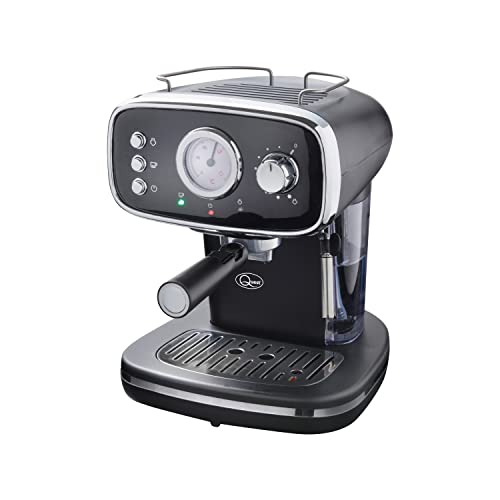How to Make Espresso Machine Coffee
An espresso maker can make delicious cups of coffee, but it needs a little more installation and maintenance than a regular drip coffee maker. You must also grind and tamp the beans yourself.
The primary ingredient to make espresso is pressure. The way an espresso machine operates is that the heating vessel heats the water to the right temperature before forcing it out of the spouts, and then through the grounds.
Temperature
Espresso is made by forcing hot water under pressure through finely ground coffee. The temperature of the water is vital to the final shot. espresso machines uk Coffeee UK can cause absence of flavor compounds. High temperatures cause over extraction and can lead to burning or bitter taste.

The ideal temperature for espresso is between 195 and 205degF. This temperature can be achieved by using a grouphead that is designed to ensure an even temperature and stability throughout the brewing process. The E61 is the most popular group head, as it offers a combination of temperature stabilty, pre-infusion capability and lever control.
It is crucial to take into account the temperature when you adjust your espresso machine for different roasts or brew ratios. This will affect the extraction yield and the crema. The ideal temperature will depend on the specific roast and bean however the general rule is that lighter roasts and higher ratios of brews require higher temperatures than dark roasts and lower brew ratios. Additionally, a high thermocouple is crucial to ensure a constant temperature.
Pressure
During the brewing process, espresso machine coffee is pressure-pushed through finely ground and tamped grounds. This triggers chemical reactions that extract flavors oils, flavors, and other soluble components from the beans. The beverage that is made is usually richer and more flavorful.
The ideal espresso machine's pressure should be nine bars that's equivalent to the atmospheric pressure at sea level. The soluble components in the coffee bean are best extracted at this pressure.
However some espresso machines advertise 15 or 20 bars of pressure. They may be able to reach these pressure levels but they may not sustain them throughout the extraction.
To put it in perspective In terms of pressure, one bar is equivalent to the 32 pounds per square inch PSI of a car tire. It's also four times the pressure professional cyclists use when filling their bike tires. Any serious home barista must to be able to regulate the pressure of their espresso machine, and also produce consistent espressos.
Water
Water is a key ingredient in a great cup of espresso. The correct water can help your beans reach their full potential. However, the wrong water could cause problems such as clogged pipes or even damage to your expensive machine.
For the best espresso extraction make sure you choose the natural spring that has a high mineral content. This water will enhance the taste of your espresso without the chalky mineral traces found in tap or bottled water. This is a great alternative to reverse osmosis. It can be too pure and cause issues with flavor.
But, you shouldn't use an water filter that removes too many minerals from your tap water, as this can also cause flavor and extraction issues. Buy a water testing kit to determine the average hardness of your local water. This information can be used to determine the ideal filtration system for your espresso machine.
Beans
Most coffee drinkers tend to be very involved in the entire process of making espresso. They obsess over a variety of factors, such as temperature, pressure in the water and viscosity. If one of these variables is not functioning properly the whole shot may taste bad.
The beans used are the most important element when it comes down to espresso. Many people believe that certain kinds are suitable for espresso. While some beans are better suited for certain purposes but any bean that is roasted can be used to make espresso. The difference between espresso beans and regular coffee beans is that espresso beans are roasted more in tipycally, well past the second crack that gives them a darker appearance and makes them more water-soluble.
Medium or dark roasted beans are best for espresso, since they give espresso shots a richness and boldness. However, it is possible to make great espresso using light roast beans, especially when these beans are ground (for convenience in an espresso machine).
Milk
Espresso and milk is a classic combination. The coffee doesn't just increase energy levels, but the steaming milk helps to balance the bitterness of the espresso, and gives it a delightful creamy flavor. This is among the most delicious pairings for food!
If you decide to get an espresso machine that also has the ability to make latte or cappuccino, be sure to look at how easy it is to use. The best espresso machines come with an ice cube that can be filled with cold or hot milk as well as a steam wand, and an espresso portafilter to pull the shot. Certain models also come with a built-in grinder along with a tamper, frother and tamper.
To remove any condensed water the steam wand should be purged each day before use (or after each espresso cup). This process is only 30 seconds, yet it is essential to keep your machine running smoothly. If you don't cleanse the system, it could cause bitterness and/or a buildup of bacteria, which could alter the taste or odor of your beverage. It's not difficult to do and should be a part of your regular maintenance routine.
